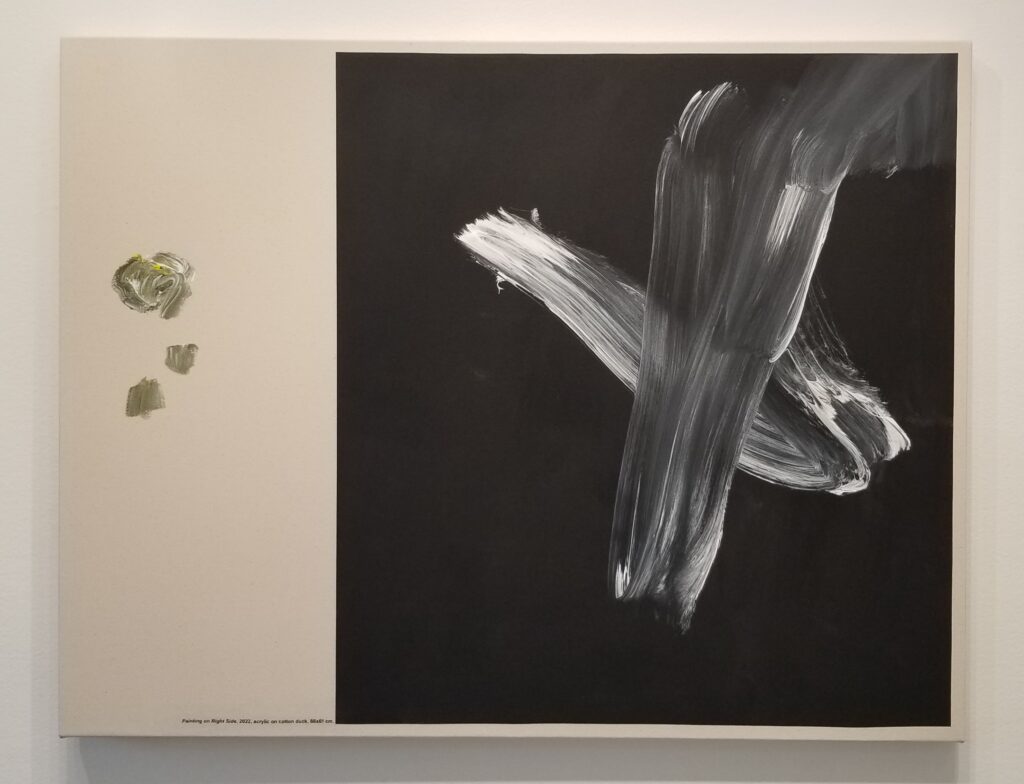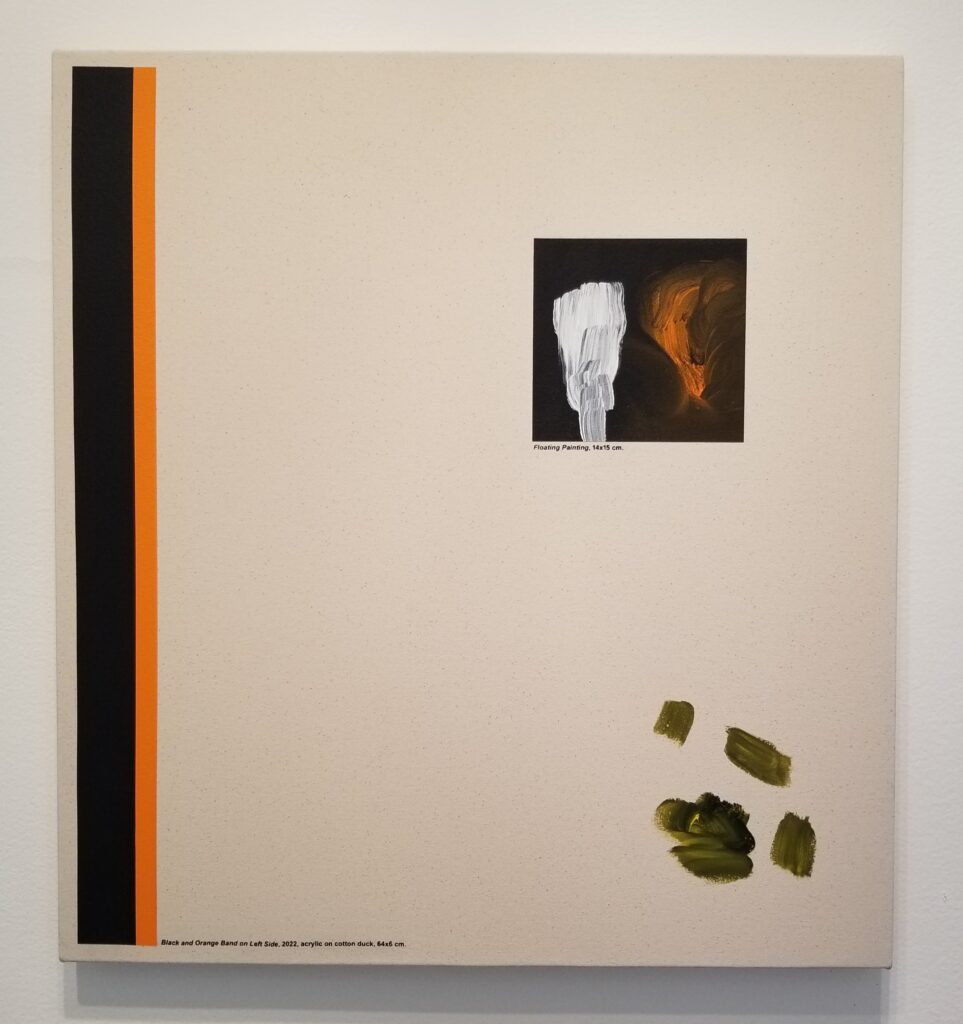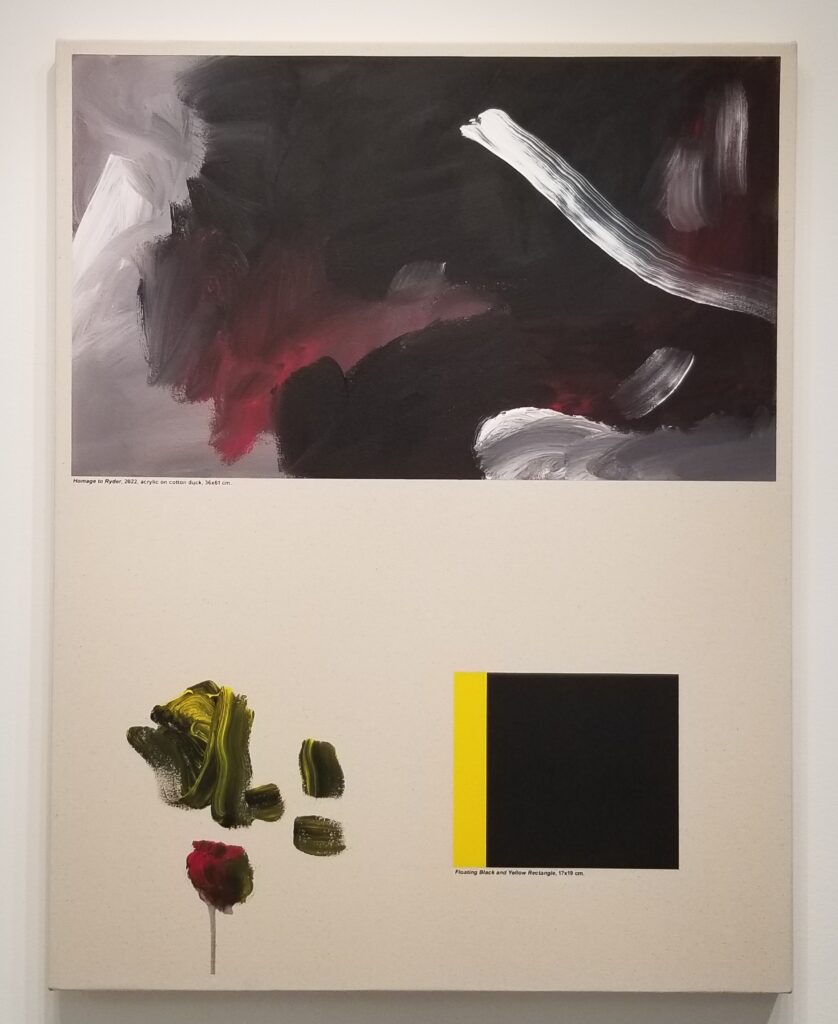by John Mendelsohn

and screen printing ink on canvas, 27 x 35”
Luke Gray’s intriguing exhibition The Afterlife of Paintings is a meditation on how paintings live on, beyond the private realm of the studio. And in a sense, it is an artist’s enquiry into how he sees the afterlife of his own work, and its relationship to the phenomena of art transformed into a quantum of data projected out into the world.
This series of canvases from 2021-22 is a marked departure from this veteran artist’s previous work. For many years he developed paintings dense with gestural incident, often emerging from passages of darkness. An extended series from the 2010’s featured a grid of spontaneously brushed blocks, like disparate paintings appearing together as if in a digital mash-up.
The works in the exhibition began with painting’s most fundamental starting point, a piece of raw canvas, and an intuitive process. For each painting, Gray selected a few elements: loosely worked rectangles resembling quotations from the artist’s own canvases, painted gestures floating free in empty space, and solid bars of color, recalling components of a minimalist painting.

Brushmarks, 2022, acrylic and screen printing ink on canvas, 26 x 24”
Then, by juxtaposing these elements Gray creates for them a new context, a new conceptual space. Suspended in a field of white canvas, the painted rectangles, gestures, and bars are separate from each other, evoking the clarity of design in various print or digital formats. Finally, the elements are further called into question by a line of text that is screen-printed onto the canvas. The text suggests a caption for an image in an article or a wall text for an exhibition.
The combined effect of these interventions launches the individual elements, and the painting as a whole, into an imaginal reality. We are experiencing painting embedded in an actual work of art, and see its possibility of its existing in the world, simultaneously. This approach recalls the writing of Jorge Luis Borges, in which a fictive work of literature become a portal into a labyrinth of speculations about authenticity and existence itself. Gray shares this self-referential combining art and its social context with a number of contemporary artists, such as David Diao and Fred Wilson.

Brushmarks, and Drip, 2022, 32 x 25”
Through Gray’s work we are seeing painting as both a private and public experience, altered by its presentation, textual information, and the unspoken meanings that are embedded in this process. In this way, the artist posits the contours of a possible “afterlife” as essential to the practice of painting, extending its relevance beyond individual expression into a wider, problematic reality.
Note: This review incorporates a statement that the author wrote for the exhibition.
490 Atlantic gallery is at 490 Atlantic Avenue, Brooklyn, NY on view from April 9 – May 22, 2022
